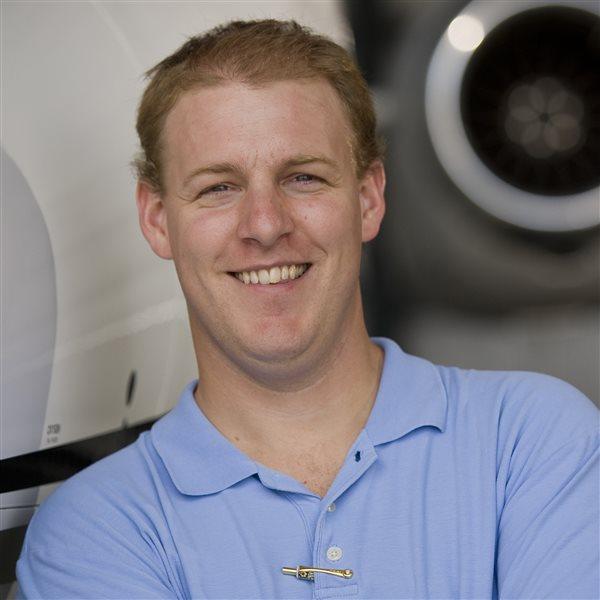Behold, the future
Bristell 916M shines under MOSAIC rules

The always-crowded light sport aircraft field is set to become even more expansive as the FAA works toward a final rule that will enable a host of innovative technologies, increased gross weight, and a greater range of capabilities as part of a major rulemaking framework called MOSAIC. Manufacturers, especially those based in Europe that already have certificated adaptations, are already lining up, frothing at the new market. Among them is BRM Aero, the Czech-based maker of the Bristell line of aircraft. After flying the 916M, we are getting antsy to see the rules come to fruition as well.
Long revered for their workmanship, solid design philosophy, and strong factory support, the company is a leader in high-end LSA sales. The 916M is the MOSAIC-ready version of the company’s B23, a certificated aircraft in Europe. The airframe largely looks like the company’s LSA offerings, but it’s longer, has a larger rudder, and the structure has been beefed up slightly. The biggest difference between the B23 sold in Europe and the 916M being offered in the United States is the engine. And oh, what a difference.
Putting out 160 horsepower, the Rotax 916iS on the 916M is a far cry from the budget-friendly 912 on the B23. With two big guys, a warm day, a heavy fuel load, and full flaps, the airplane was off the ground in about 500 feet. On a touch and go it was off the ground before the power lever made it to the stop. With the flaps properly retracted (we used full flaps for a worst-case demonstration), the airplane climbs at 1,500 feet per minute and 13 degrees nose-up. Lower the nose to a more reasonable 8 or 10 degrees nose up, and you will still climb between 900 feet and 1,200 feet per minute passing through 3,000 feet. It’s astonishing performance for a light aircraft marketed as a luxury traveling machine.
But we’re getting ahead of ourselves. The 916M’s metal wings and fuselage are expertly crafted, and care has gone into little fairings and touches that give the airplane a high-end feel and make it stand out on the ramp. There are two wing lockers that each hold 40 pounds, and stepping up to the forward-hinged wrap-around canopy puts you in the mindset that you’re about to experience something special.
Getting in is done by grabbing on to the solid handle at the back of the center console and a grip in the windscreen, and then lowering down. If you forget and instead grab onto the back of the seat, both you and it will go flying. Salesman John Rathmell said the seatbacks, which simply rest in place with no fasteners, are designed that way to avoid being broken by overzealous pilots and passengers. Anyone who has owned a Piper Cherokee knows seatbacks can and do break, but this still feels like an odd choice for such an otherwise well-refined airplane. The backrest shifted slightly during maneuvers and landings, something that experienced pilots will have to get used to.
The canopy can stay cracked open with an included accessory that keeps one of the two struts from fully compressing. This provides a nice cooling breeze through the startup, taxi, and runup. Anyone familiar with Rotax operation will quickly adapt to the dual electronic control unit, turbocharged, single-lever power control 916iS. Integration with the Garmin G3X is well designed.
There are times when the 916M feels like a light sport airplane. Taxiing, for example, results in the ailerons bouncing back and forth, knocking the center stick repeatedly between your thighs. But the airplane mostly overcomes these nits with good storage, and even better performance.
At altitude the 916M won’t be the fastest MOSAIC-compliant design in the sky, although it’s no slouch. At 90 percent power at 6,000 feet burning 9.8 gallons per hour, true airspeed is around 142 knots. That’s faster than a Cessna 182 on less fuel. Dial it back to 70 percent power and you can mosey along at 125 knots on a miserly six gallons an hour. Watching the range rings on the G3X as you cycle through the power changes is eye opening. Even without full fuel, we could have easily flown from AOPA headquarters in Frederick, Maryland, to Jacksonville, Florida. Full fuel could take you nearly to Minneapolis nonstop. Bladders will give way long before fuel in the 916M. One of the great joys of modern designs is increased visibility over the nose. The panel sits low and largely out of view, and the single-piece windscreen provides an expansive view.
When light sport aircraft were first introduced, they were seen as less expensive, local fun machines. The tight weight limit meant compromises on space, useful load, and thus range, performance, and utility. The 916M may look like a traditional LSA, but it is fundamentally a different airplane. It’s fast enough to keep up with cross-country classics like the 182, efficient like an experimental, well built like a Bonanza, and thoroughly modern like a Cirrus. The Garmin GMC 507 autopilot controller includes the blue level button and electronic stability protection. There’s an airframe parachute from BRS, and the runway performance is more Super Cub than Saratoga.
Rathmell said he targets potential Cirrus buyers, which before flying the 916M seemed like a bit of creative brand association. But, after experiencing the airplane, the promise of three-quarters of the performance on a quarter of the cost is very real. 



 bristell.com
bristell.com


